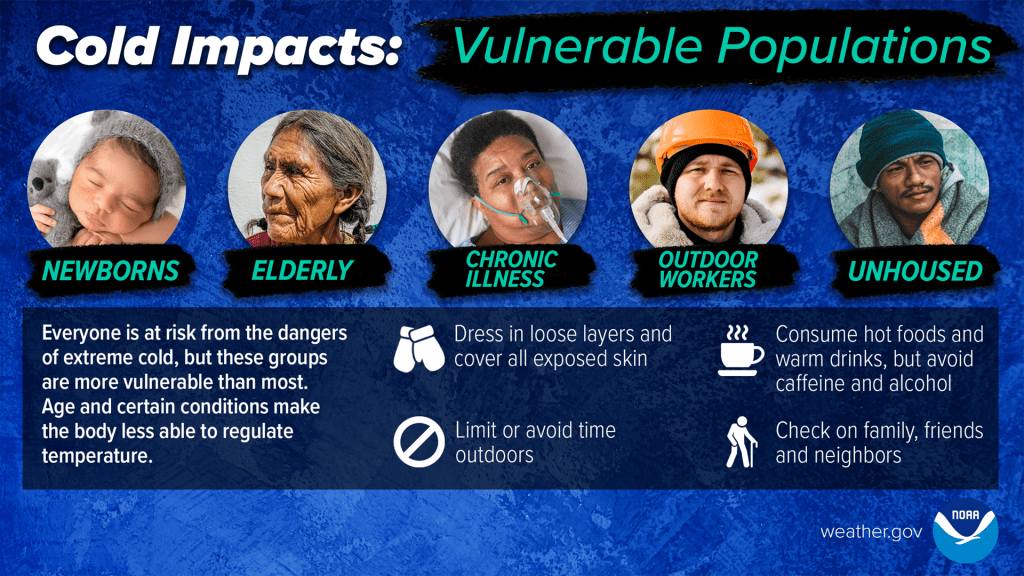Take precautions against
below-freezing temps
Published 12:16 pm Thursday, January 16, 2025

- National Weather Service graphic
**UPDATE JANUARY 16, 2025**
Freezing weather is forecasted to return next week. Forecasters are predicting wind chills in the teens, in the mornings, Monday through Wednesday of next week and give a 20% to 30% chance of winter precipitation, in the area, Tuesday into Wednesday.
MOULTRIE — Forecasters predict temperatures to drop to the low 30s and below freezing over the next ten days. Here are some precautions to take for pets, pipes and plants.
Trending
“Bring your pets inside or have them a warm place to stay out of the elements. Wrap any exposed pipes and/or drip faucets,“ said Colquitt County Emergency Management Director Justin Cox. Residents should also check on the elderly in their neighborhoods.
Here are the reasons to take these actions when the temperatures fall and, also, some tips from experts on things to do.
The Humane Society of the United States website states that outside pets are in real danger when temperatures drop below freezing and even inside pets can be affected when taken outside for walks. The site gives these tips for animals:
- Don’t leave pets outdoors when the temperature drops, especially cats even if they do roam throughout the rest of the year.
- No matter what the temperature is, windchill can threaten a pet’s life. Exposed skin on noses, ears and paw pads are at risk for frostbite and hypothermia during extreme cold snaps. For this reason, short-haired dogs often feel more comfortable wearing a sweater — even during short walks.
- Warm engines in parked cars attract cats and small wildlife, who may crawl up under the hood. To avoid injuring any hidden animals, bang on the car’s hood to scare them away before starting the engine.
According to the website Protect Your Pipes, pipes in dwellings can freeze if they are exposed or if the temperature drops in an unheated space like an attic, garage or basement. Here are measures that the site gives to keep that from happening:
- Drip cold water in farthest faucet from the main valve. Moving water keeps pipes from freezing.
- Insulate pipes in unheated areas, and open cupboards and vanities to warm pipes.
- Close inside valves that control the water supply.
- Keep outside valves open so water remaining in the pipe can expand without causing a break.
- When freezing weather is coming, turn off water to outside spigots and drain all water from the line.
According to the UGA Extension website, ornamental plants also need to be protected and sheltered from freezing temperatures. Here are some tips from UGA Extension:
- Container plants are especially susceptible to cold temperatures as their roots are more exposed because they are above ground. Protect them either by placing them inside a protective structure (house, garage, greenhouse or shed) or by placing a protective covering over them.
- Push together outside container plants and mulch or cover them because this will decrease heat loss from the sides of the containers. Wrap the bases of the containers in plastic, burlap or blankets to reduce heat loss.
- Heat radiating from the soil protects plants growing close to the ground. Tall, more open plants do not receive as much radiating heat and are not as protected from the cold. Mulching helps reduce heat loss of the soil, thus minimizing temperature fluctuations.
- Covering plants with sheets, blankets or cardboard boxes helps protect them from low temperature injury. Remove the cover and provide ventilation during the day to allow the release of the heat trapped by solar radiation.
- Check the water needs of plants prior to a predicted cold snap and water if necessary. Moist soil absorbs more heat, helping to maintain an elevated temperature around the plants.
- Radiational freezes occur on calm, clear nights when temperatures drop because of heat loss from the surfaces of objects. Canopies help reduce radiant heat loss from the plants and soil by preventing heat loss to the atmosphere.
- Windbreaks like fences, buildings, evergreen plantings and temporary structures can help protect plants from cold injury caused by cold winds.
Last but not least, Cox also encourages residents to, “Use all heating devices safely and per the manufacturer’s guidelines”





